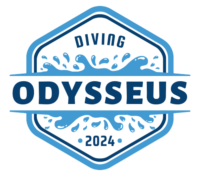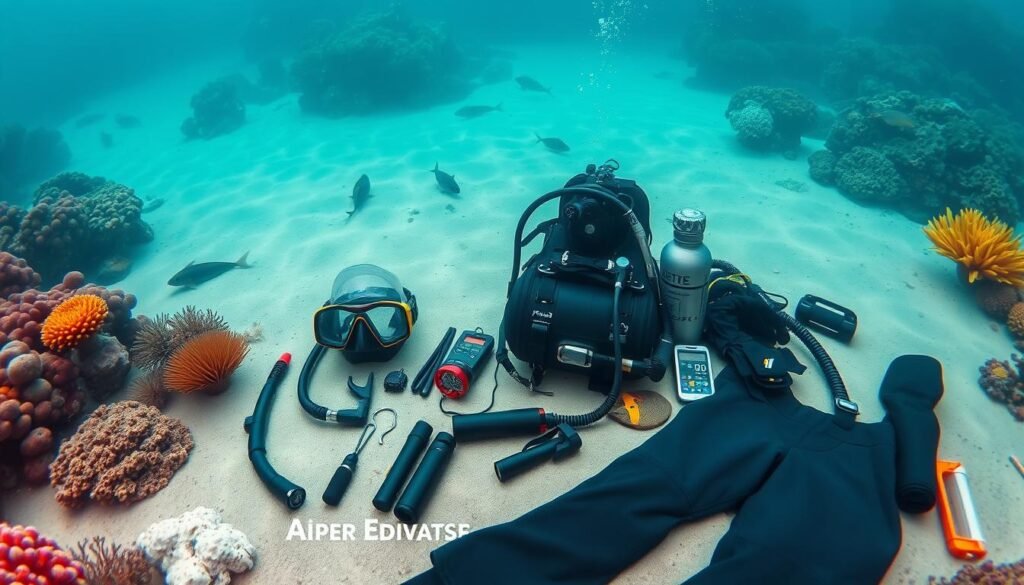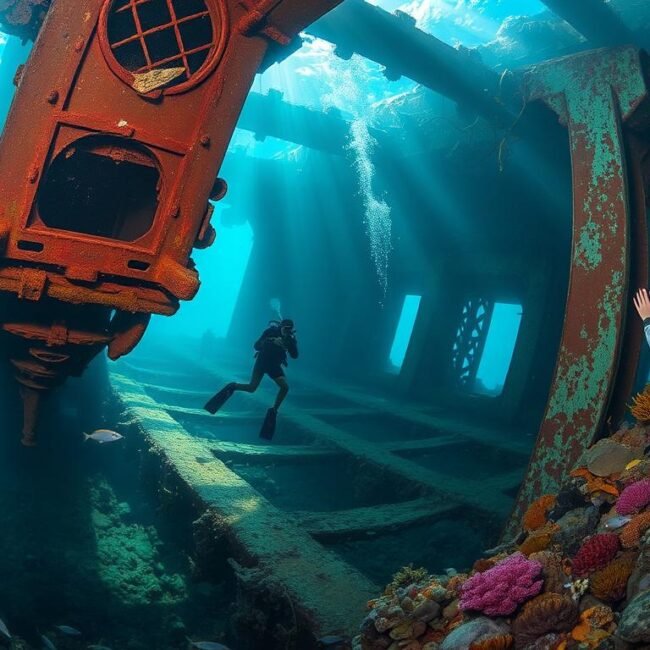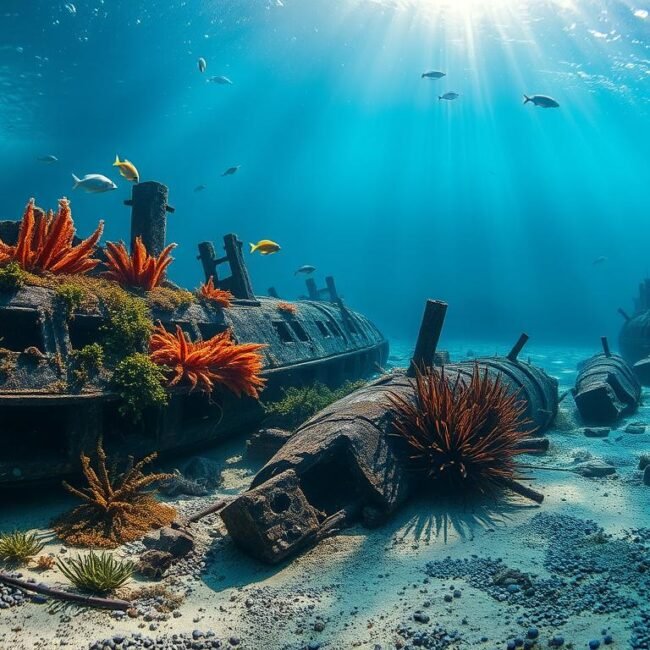Did you know nearly half of all dives involve exploring underwater wrecks? That stat floored me the first time I heard it. I was seriously jazzed, picturing myself poking around every hidden compartment of these massive sunken ships.
But let me tell you, wreck diving equipment is an absolute game-changer if you want a safe and fun dive. You can’t fully appreciate a historical wreck if you’re gasping for breath on an old, unbalanced regulator. I learned this the hard way—one time I forgot to bring a balanced regulator, and let’s just say it was not my finest moment at depth!
Luckily, I eventually figured out that having the right wreck diving equipment is what separates an okay dive from a mind-blowing adventure. In this guide, I’ll share my go-to gear, embarrassing slip-ups, and practical pointers to help you explore wrecks like a pro. So, let’s suit up and plunge into the world of underwater relics together!
Essential Scuba Setup for Wreck Diving
This setup is the base of your wreck diving gear. If your regulator, BCD, and thermal protection aren’t good, you’ll spend too much time fixing your gear.
Regulator and Octopus
I thought all regulators were the same until I tried a high-quality one. It made a huge difference at deeper depths.
Importance of high-quality, balanced regulators for deeper dives
At 90 feet, my old regulator was hard to breathe through. It was like drinking a milkshake through a straw. Balanced regulators make breathing easier, especially at deep depths.
They also work better in cold water, thanks to environmental seals. These seals prevent parts from freezing.
Role of an alternate air source (octopus) in emergencies
Your octopus is your underwater hero. I used mine once in an emergency. Without it, we could have been in trouble.
Wreck diving can be unpredictable. You might need to share air suddenly. Keep your octo in good shape and test it often.
BCD (Buoyancy Control Device)
The BCD is like your underwater throne.
Selecting a BCD with reliable lift capacity
Wreck diving often means carrying extra gear. A BCD with enough lift keeps you from sinking. I once used a BCD that was too small and had a hard time staying buoyant.
Comfort is also key. Look for a BCD with padded straps and an adjustable harness to avoid discomfort.
Integrating weight systems for better stability in tight spaces
In overhead environments like wrecks, securing your weights is key. Integrated weight systems keep them close to your body. This reduces the risk of snagging on rusty beams.
I used to carry a weight belt but almost got caught on a jagged ladder rung. Thankfully, it didn’t catch, but it was close. Integrated weight pockets help keep a low profile, making tight ship corridors less scary.
Wetsuit or Dry Suit
Thermal protection is crucial, especially in deep or cool wrecks.
Choosing thermal protection based on water temperature
I’ve dived in warm waters with a 3mm wetsuit and in cold waters with a dry suit. The water temperature decides your choice. If you’re new to dry suits, practice in a safe place first. They can be tricky to manage at depth.
Ensuring a snug fit to maintain warmth and freedom of movement
A suit that’s too loose lets water in and out, making you cold. Too tight limits your movement. Look for suits that fit snugly but don’t restrict you. With the right fit, you’ll stay warm and move freely.
“Wreck diving requires a comprehensive risk assessment to identify and manage potential hazards.”
Redundant Air Supply Systems
Wreck diving often means overhead environments. These can quickly become no-exit scenarios if something goes wrong. Having backup air is essential.
Pony Bottles and Spare Tanks
Carrying a pony bottle might seem extra at first. But wait until you hear this story.
Why having a backup tank is crucial in overhead environments
I was on a wreck dive with a new buddy. His SPG needle went into the red too soon. It turned out his regulator had a slow leak. A pony bottle gave us extra air to plan a safe exit.
Proper mounting and streamlining for convenience
Mounting a pony bottle can be tricky. You want it secure but easy to access. I prefer it on my left side for easy viewing. Practice deploying it in calm waters before using it in a wreck.
Surface Marker Buoys (SMBs)
These floating beacons might seem unnecessary at times. But they’re invaluable.
Quick deployment for emergency ascents
Once, I ascended away from the main mooring line and ended up 30 yards from the boat. Deploying my SMB was crucial. It’s a skill to learn, especially for blue-water safety stops.
Signaling to boats and other divers about your position
SMBs are great for letting others know where you are. If you’re diving a well-known wreck site, your SMB can prevent collisions. It also helps if you have a delayed surface procedure, as it makes you visible to boats or your support vessel.
Some divers even attach a small strobe to the top for nighttime or low-visibility conditions.
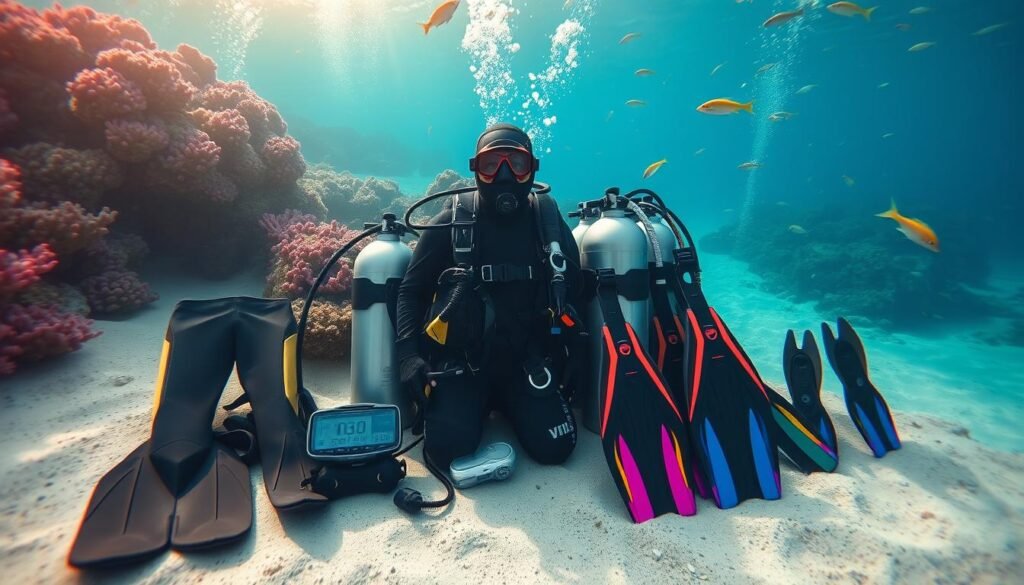
“Regular burn tests every six to 12 months help divers gauge battery performance in dive lights.”
Specialized Lighting for Wreck Diving
Ever been inside a pitch-black hallway underwater? A dependable light is crucial. It’s not just about seeing the wreck; it’s about spotting hazards before they spot you.
Primary Dive Lights
I’ve had my share of “oops” moments with dive lights. From draining the battery mid-dive to forgetting to secure them properly.
Choosing powerful, narrow-beam lights to navigate dark corridors
In tight areas, a narrow beam light works better than a wide one. It helps you spot small details like leftover netting or hidden passageways. I once used a wide floodlight and stirred up silt in a cramped cargo hold. A narrow beam minimizes silt disturbance.
Durability and battery life considerations for extended bottom time
It’s frustrating to lose your primary light mid-dive. I’ve been there, fumbling in the dark while trying to switch to my backup. Always check the burn time on your light. Bring spare batteries or a second primary if you’re pushing the limits. Look for rugged construction and O-ring seals that can withstand knocks against the wreck.
Backup Lights
Carrying at least one backup is a golden rule in wreck diving. I personally carry two. It might look like a lot of gear, but it’s better to be safe than sorry.
Why carrying more than one backup light is essential
During a memorable night wreck dive, my primary died just 10 minutes in. My first backup turned out to be malfunctioning. Luckily, I had a second backup. This taught me to always double-check backups before diving—and to bring more than one whenever possible.
Strobe functions and color filters for better wreck photography
If you’re into underwater photography, a strobe function can really highlight details. Some lights also come with red filters that help preserve night vision and minimize startling marine life. I once captured a mesmerizing shot of a conger eel lurking around an engine room, all thanks to my strobe and patience. Having these tools can make a big difference in your photos.
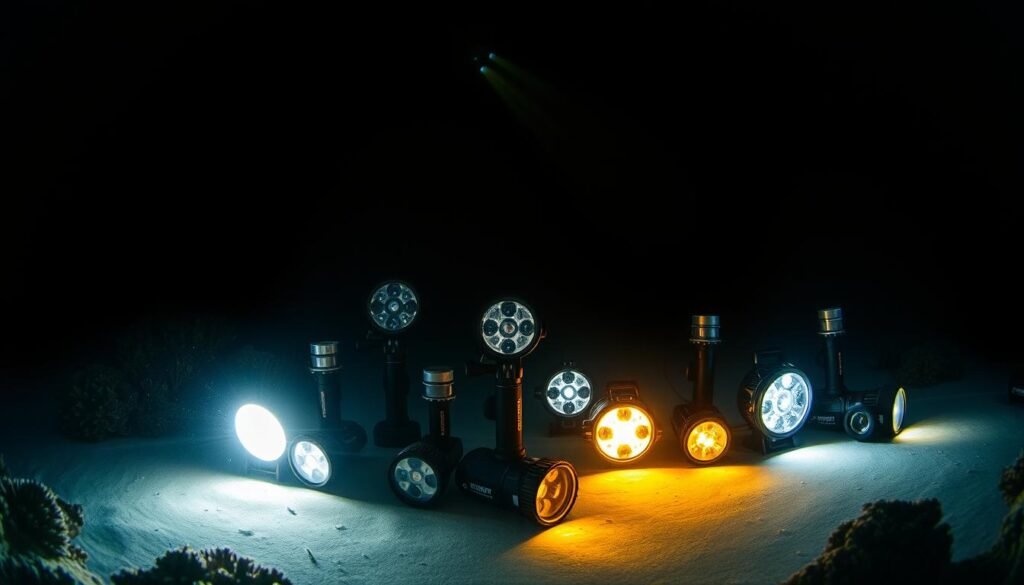
Underwater Navigation Tools
Exploring wrecks underwater can be like navigating a maze. It’s easy to get lost without the right tools. I once took a wrong turn and found myself in a huge cargo hold with no way out. That’s when I learned that compasses, dive computers, and reels are essential.
Compasses and Dive Computers
Before I had a dive computer, I used a bottom timer and a watch. It felt like diving without a map.
Using compasses to navigate confined spaces
A compass is a lifesaver when you can’t see landmarks. I take a heading at the exit before diving deep. It might look silly, but it helps you find your way out. Plus, knowing where you are in dark places boosts your confidence.
Dive computers with depth alarms to monitor your bottom time safely
Dive computers have depth and time alarms that you can set. They’re great for wrecks because they help you stay aware of your depth. I once went too deep without realizing it. The alarm on my computer saved me from decompression sickness and helped me manage my air.
Reels and Lines
If I had to choose one tool for wreck diving, it would be a reel.
The crucial role of guideline reels in low-visibility wrecks
A guideline reel is essential in wrecks where visibility is poor. You tie it off at the entrance and follow it back. I once got lost in a silt-out so bad I couldn’t see my hand. Without the reel, I might still be lost.
Proper tie-off techniques to avoid tangles and confusion
Make sure to tie off at a secure spot that you can find again. I’ve seen divers get their line stuck on rusty parts or thin rails. Always find a solid anchor and tie a good knot. Practice handling your line to avoid getting tangled. A little care can make your exit smooth.
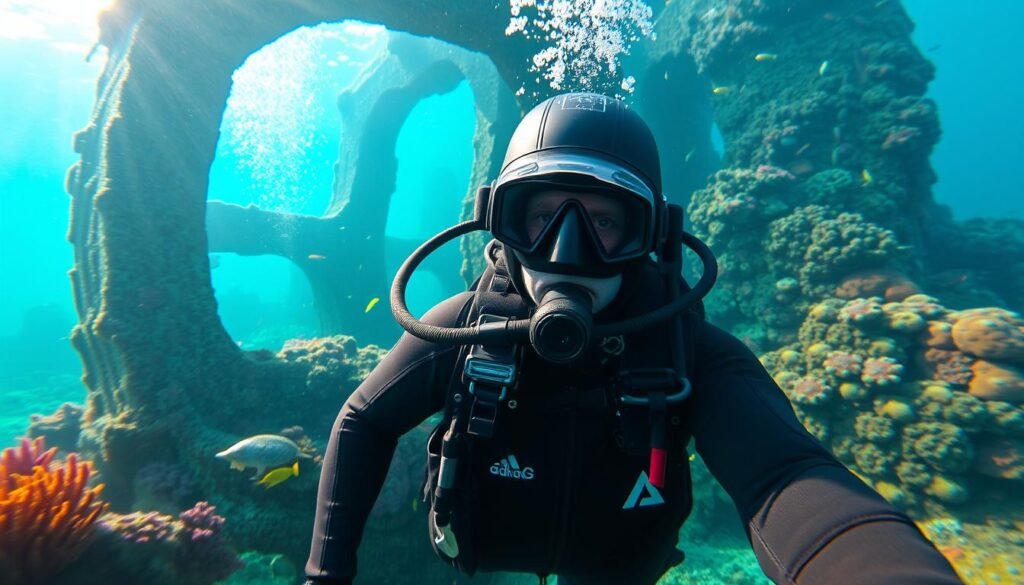
The Halcyon Scuba Line Cutter is designed for all environments, making it suitable for both warm and cold water diving.”
Safety and Emergency Equipment
Diving in overhead environments is risky. One mistake can lead to entanglement, low air, or strong currents. That’s why safety gear is crucial—it’s your backup plan.
Cutting Devices
I never thought much about cutting devices until I got tangled in old fishing line inside a sunken tugboat.
Using line cutters or EMT shears in case of entanglements
Line cutters and EMT shears are great for cutting through fishing lines or netting. I prefer them over knives for thin or flexible entanglements. When fishing line caught my fin, I quickly cut free without harming myself.
Benefits of carrying multiple cutting tools
It’s easy to drop a tool when wearing thick gloves or in low visibility. Having a backup tool can save seconds if you can’t reach your primary. I’ve heard many stories of divers losing their knives. Don’t let it happen to you!
Dive Knives
While small cutting tools are handy for quick entanglements, a dive knife can be your multi-purpose companion.
Selecting corrosion-resistant materials
Saltwater eats cheap metal for breakfast. Titanium or stainless steel are your best bets for durability. My first knife rusted after just a few dives, which taught me to invest in better materials. And yeah, it might cost more, but it saves you money in the long run.
Mounting options that ensure quick access
Some folks like leg straps, others prefer BCD integration, and some like to attach it to the inflator hose. I’ve tried them all. My personal favorite is a smaller knife on my BCD strap—easy to reach, less snag potential. But hey, to each their own! Just practice grabbing it quickly so you’re not fumbling around during a real emergency.
Whistles and Signaling Devices
It might seem old-school, but whistles can pierce through surface noise better than you might think.
Audible alerts for surface assistance
If your boat drifts off or you come up away from the group, a whistle can help you get attention fast. I used one to alert a nearby fishing vessel once when my dive boat’s engine died. It might’ve been a comedic scene—me bobbing up and down, whistling like a lifeguard—but it worked.
Visibility markers and mirrors for boat crews
Some divers carry small mirrors or reflective devices that can catch the sun and signal for help. You might never use it, but the one time you do, you’ll be grateful it’s there. I stash mine in a pocket along with my DSMB spool. Safety first, always.
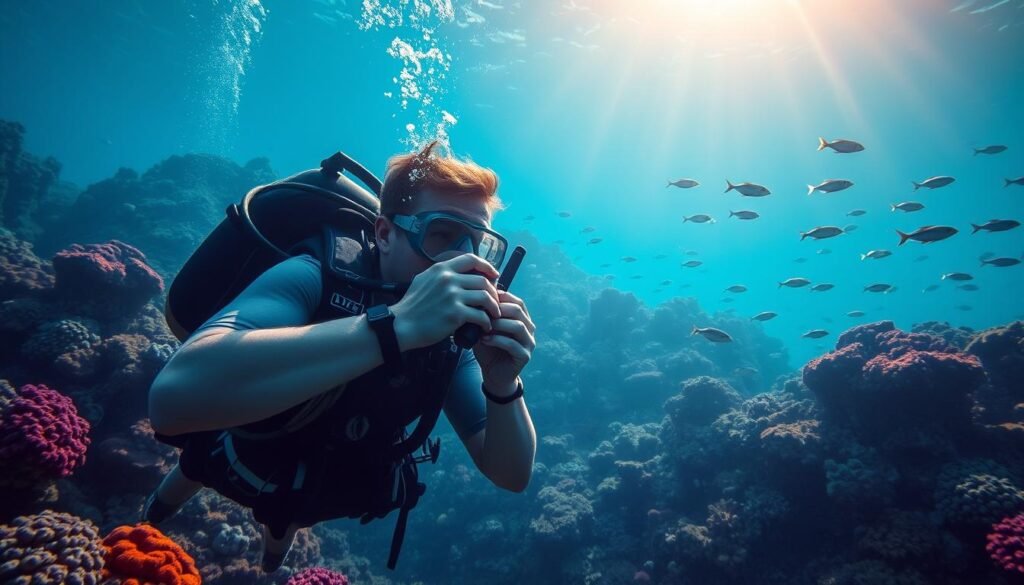
Additional Gear for Comfort and Efficiency
Who says diving in a wreck can’t be comfy? There’s a lot to be said about the little extras that keep you warm, well-protected, and streamlined, especially when you’re maneuvering through tight corridors or rummaging around for goodies in the dark.
Dive Gloves and Hoods
I used to skip gloves, thinking they were just a barrier between me and the thrill of touching the wreck. Big mistake.
Protecting hands from sharp edges or abrasive surfaces
Wrecks are often covered in barnacles, rust, and jagged metal edges. I once sliced my finger while holding onto a railing for stability—ouch! A good pair of gloves can prevent scrapes and cuts, plus they provide a better grip so you’re not sliding around.
Retaining body heat in colder environments
Even if the water feels warm at the surface, it can get chilly down there. A hood helps trap heat, especially around your head where a ton of body heat is lost. I’ve had dives where my ears felt like ice cubes until I slipped on a hood. It might not look super fashionable, but it’s so worth it.
Fins and Booties
I’ve tried everything from sleek freediving fins to heavy-duty tech fins, and I can tell you, not all fins are created equal for wreck diving.
Choosing stiff-bladed fins for better propulsion in currents
Wrecks often attract currents that can swirl around corridors and open decks. Stiff-bladed fins give you more power to push through these unexpected currents, even if they can feel a bit heavier on your legs. Once, I attempted a dive with soft fins and found myself struggling to keep up with the group, which was frustrating and a little embarrassing.
Proper booties for traction on slippery ship decks
When you’re diving around a wreck, good booties are key. You don’t want to slip on a wet deck. Look for booties that fit well and have grip to keep you steady.
Tank Accessories
Let’s talk about the little things that make your dive better.
Tank bangers for quick communication
A tank banger can quickly get your buddy’s attention. I use a rubber banger on my tank. It’s much better than waving or yelling underwater.
Visual markers for buddy recognition in dim conditions
Lost your buddy in a dark wreck? It’s scary. A colored tank light or sticker can help you find them fast. It’s a small thing that makes a big difference.
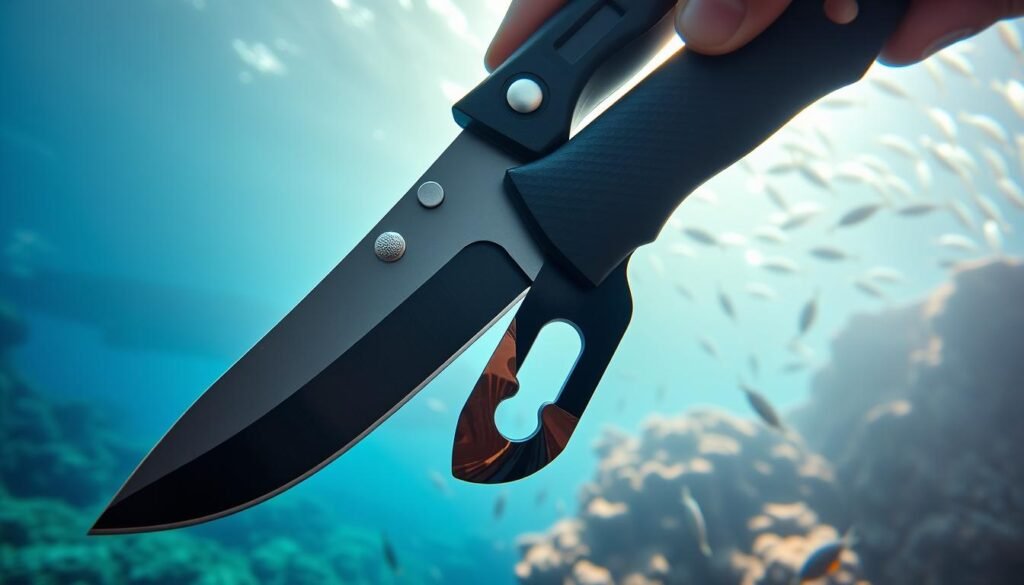
Conclusion
Wreck diving is exciting and sometimes a bit scary. The right wreck diving equipment makes it safer and more fun. From regulators to SMBs, each piece is important for your safety.
Make your gear fit your needs. A dry suit is great for cold water, while a wetsuit works for warmer dives. Always put safety first. Tools, whistles, and extra lights can save your life.
I’d love to hear about your gear and diving tips. Share them in the comments! Remember to dive safely and respect the ocean. With the right gear, you can explore its wonders safely. Safe diving, everyone!
FQAs
What’s the most important piece of gear for wreck diving?
Honestly, I’d say a reliable regulator is number one on my list. You want something balanced that won’t give you that frustrating “milkshake-through-a-straw” feeling at depth. If your air delivery fails, the rest of your gear won’t matter much.
Should I wear a wetsuit or a dry suit for wreck diving?
I’ve personally rocked both, and it really depends on the water temperature and your personal tolerance for cold. In chilly waters, a dry suit can keep you warm and toasty, but it requires a little practice to control buoyancy. If it’s warmer and the wreck isn’t too deep, a well-fitting wetsuit might be all you need.
Why is a pony bottle or redundant air supply so important in wreck diving?
Overhead environments can feel claustrophobic in a hurry if something goes sideways. I’ve had a buddy run low on air unexpectedly, and having a spare tank (pony bottle) gave us room to breathe—literally—so we could make a calm exit. It’s a small investment for a huge peace of mind.
What kind of dive lights do I need for exploring dark ship corridors?
A powerful primary light with a narrow beam is key to cutting through silt and murk. Battery life and durability matter too, so I always bring at least one backup, if not two (been there, needed it). If you’re into photography, look for lights with strobe functions or color filters to capture those eerie wreck details.
How do I avoid getting lost in a labyrinth-like wreck?
A good navigation setup—compass, reel, and dive computer—can be your best friend. I always tie off my reel at the entry point and run a guideline into the wreck, so if visibility goes south, I can follow it back out. And don’t forget to set depth or bottom-time alarms on your computer; it’s way too easy to get caught up in the wonder and lose track of time.
